Every camera is standard set to AWB, meaning "Auto White Balance". AWB uses 18% gray as a reference, to correct any color cast in the image. But the auto white balance is a dumb algorithm that cannot interpret a scenery. Perhaps it would be best to set the white balance yourself, instead of relying on the camera.
In the analogue photography you had a choice for daylight film or artificial light film, among a few others. And once you made the choice you had to stay with it during the remaining images on that film role. A lot is changed with the digital photography. Now it is possible to have a custom correction for every single photo. By choosing the auto white balance the camera will read the scenery and adjust any color deviations as much as possible, if necessary.
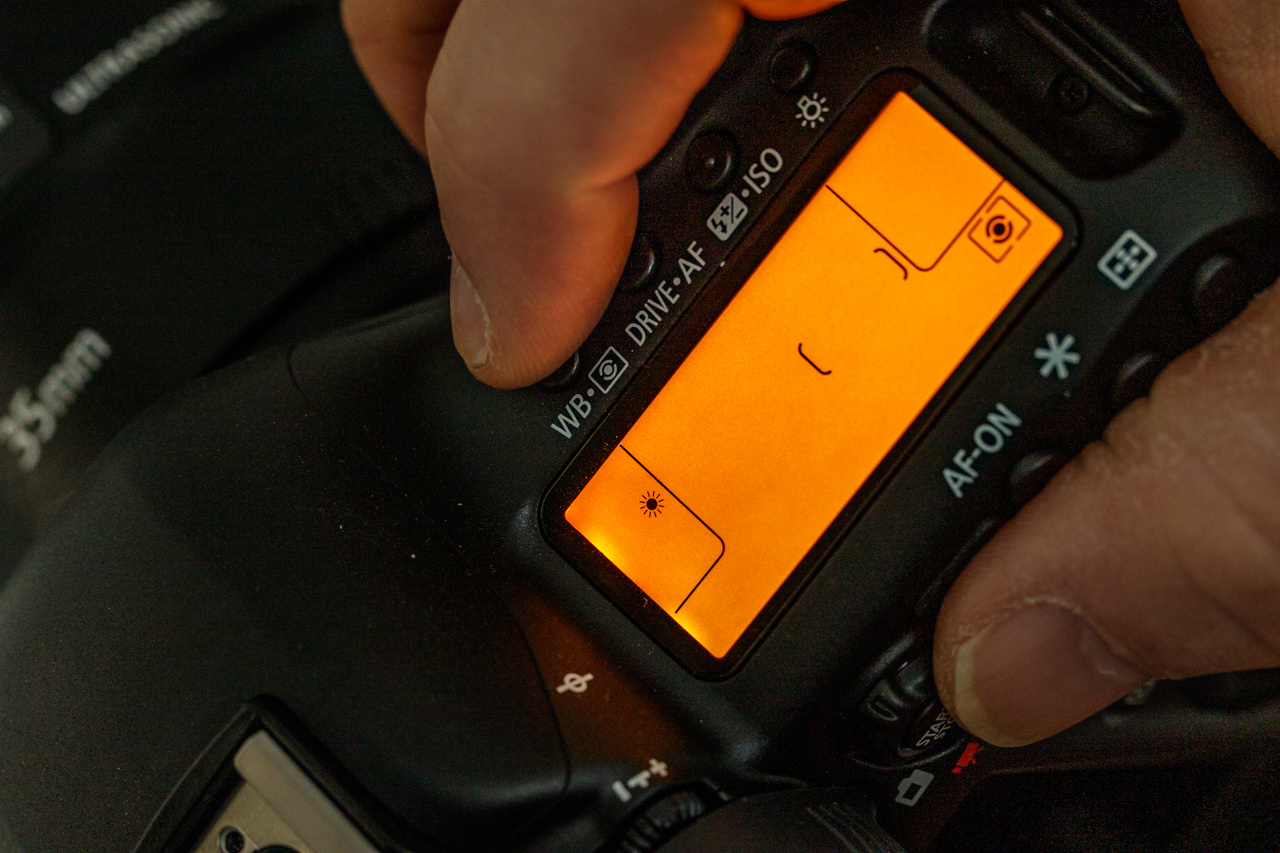
Every camera has the possibility to change the color balance from auto to a lot of presets like daylight, shade, cloudy, tungsten, fluorescent and a custom color temperature. Turning the auto white balance off gives more control.
Auto white balance will work for most images under normal, or standard situations. The setting is perfect for most people. But when a correct color is very important and critical, it might be much better to choose a fixed white balance setting. I can advise this for landscape photography. But also event photography, or wedding photography, may benefit from it.
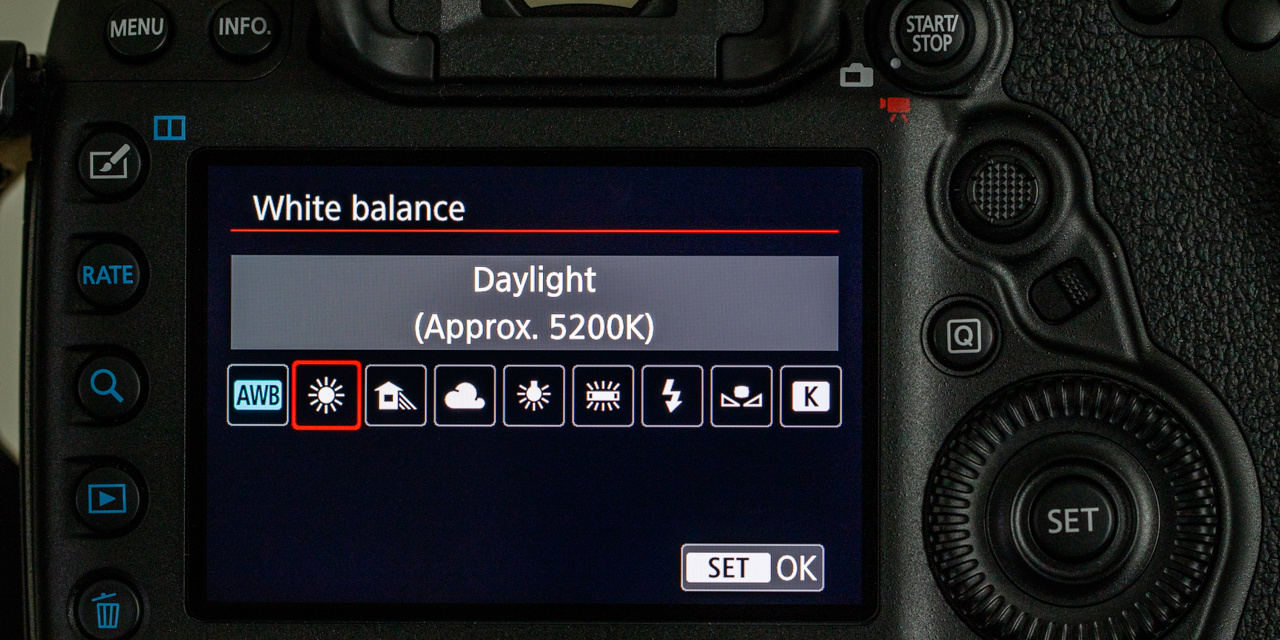
I have a strong preference for daylight setting. I feel it gives the best result, especially in landscape photography. But also with other sorts of photography can benefit from a fixed white balance.
A landscape photographer is often confronted with different light situations and changing ambient colors during the day, sunset, and twilight. Sometimes the light can be truly magical, with an intense red sky or beautiful colors reflecting in water. If your camera is set to auto white balance, the system might try to correct these extreme colors into something more neutral.
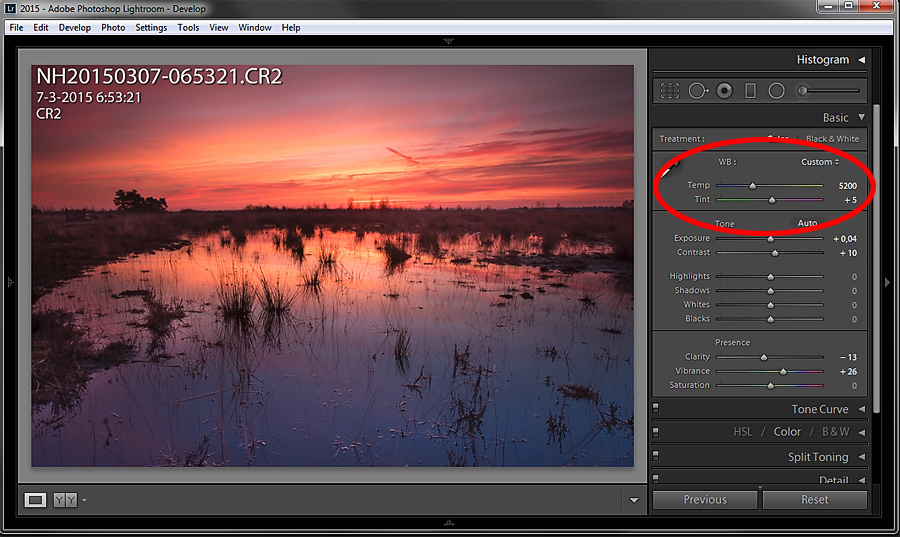
Back in 2015 I witnessed an amazing sunset with intense colors. Although I cannot check what effect the auto white balance would have given, the colors have turned out perfect with daylight setting.
When using a fixed white balance setting, you get a consistent color balance throughout a series of photos. Changes in ambient colors will be much clearer visible on screen because there is no system trying to take out any excesses in color casts. I always use daylight ("daglicht" in the images below) setting, approximately 5200K, which is imitating the daylight film from the analogue days.
To have an idea what the difference is between auto white balance and a fixed daylight setting, I shot different scenes during one single morning. I took two pictures of every scene, with the white balance set to auto and daylight. I did this at the spot, on the camera, and not afterwards in post processing. As a matter of fact, these images have no post-processing whatsoever. It is straight from the camera.
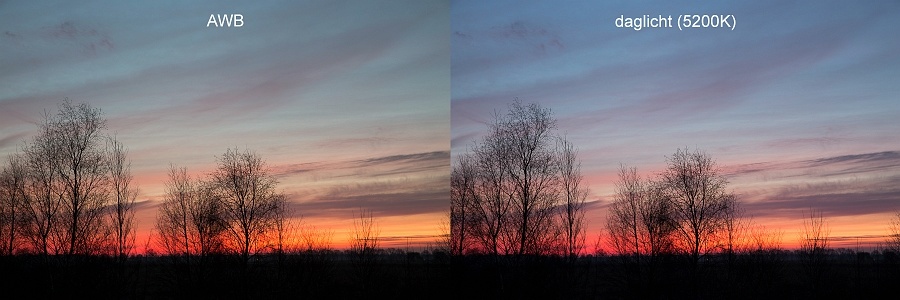

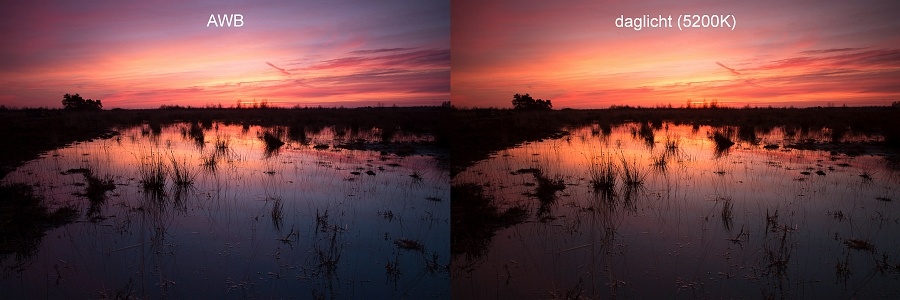
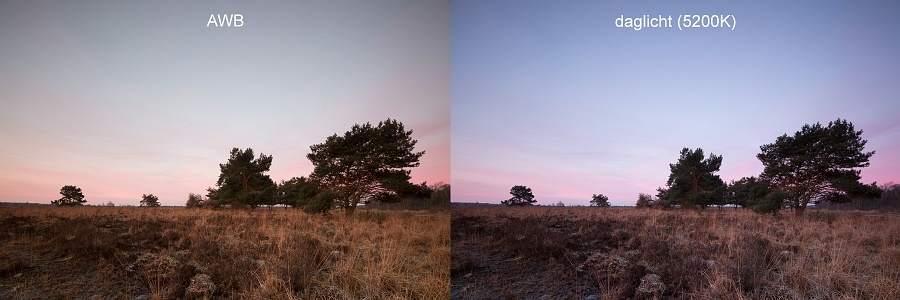
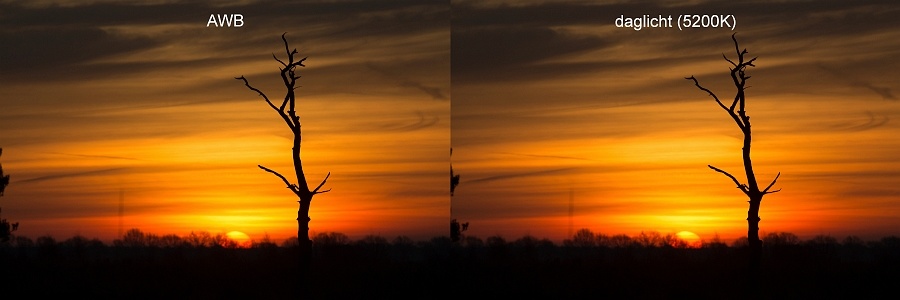

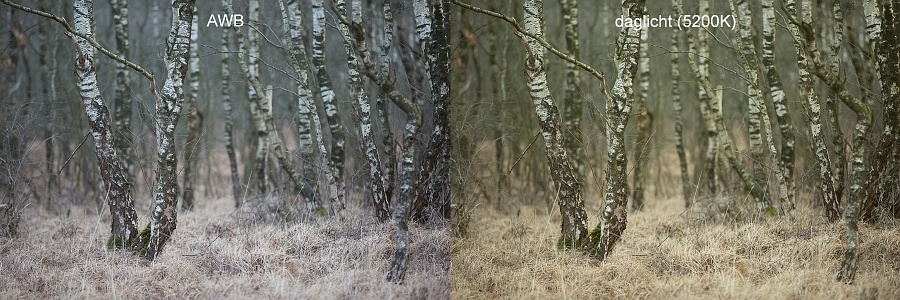
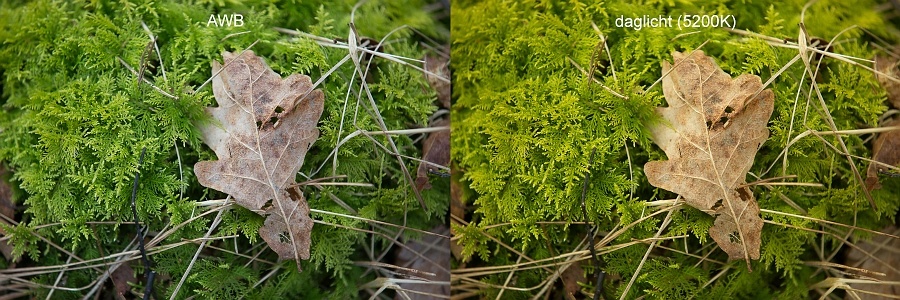


I know what some of you might think; when you shoot in raw file format, you have the ability to change white balance (or color balance) in post processing, without any degradation or loss in quality. And that is true, this camera setting can be changed without any problem. I also shoot my images in raw, of course. Nevertheless, I don’t want my camera to calculate a white balance setting for every single image I make. I want to be in control.
I have found it is much easier to judge an image on the LCD screen of my camera when there is no difference in color between images. Auto white balance will calculate and possibly set a (slight) different color temperature for every image, depending on what is in the frame and what colors are present.
Even more important, I find the difference in white balance settings to be distracting in post-processing. It takes an extra step when I need to correct all images to the same color temperature to make comparison and the selection process easier. And if you think one image needs a bit of fine tuning after all, it is always possible. That is one of the strengths of shooting raw, of course. But I prefer to judge this from a consistent color balance throughout the series of photos I have. And I think the daylight white balance setting is the best "neutral" setting available.
This also works for photographers who shoot a lot of images in a short amount of time, in a setting where the light situation doesn’t change a lot. A series of images from a wedding shoot is a perfect example; every image needs to have the same color balance. So why not using a fixed white balance? This prevents unwanted corrections by the auto white balance system, and it makes post-processing of large series of images much, much faster.
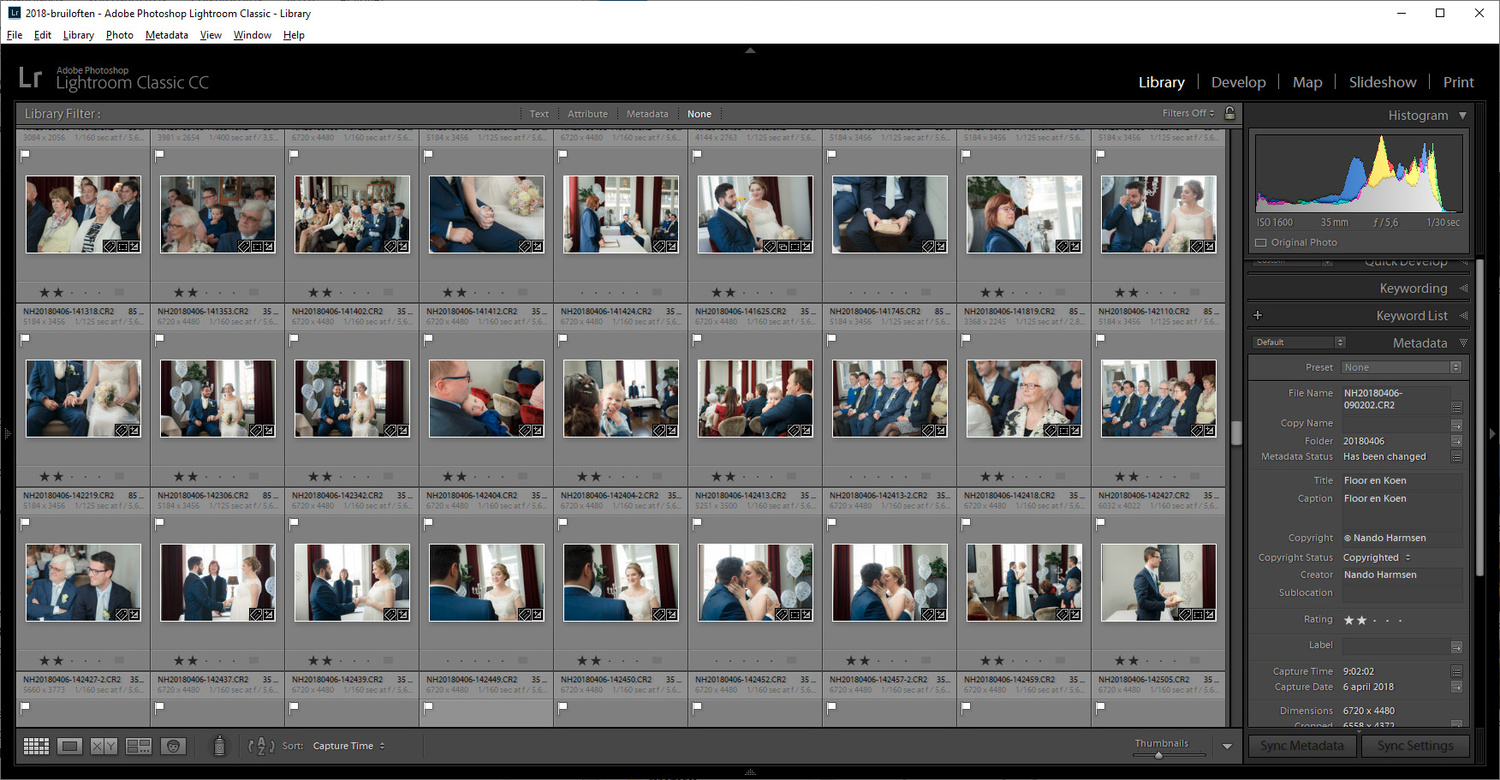
An example of a wedding shoot, in the same location. With a fixed white balance I am sure the colors in this series will be consistent. When auto white balance is set, every photo can have a different color temperature. You can correct this, but it is an extra step in post processing.
I find any variance in color temperature due to auto white balance distracting, so I have used daylight setting for many years now. Nevertheless, I do change white balance setting if necessary. For night photography I use a setting of 3400K or 4000K, depending of the amount of surrounding artificial light sources, or if moonlight is present. And a color temperature of 2700K is perfect for indoor photography, when light bulbs are the main light source. But when I go outdoors again, I change it to daylight. Should I forget to change it back, it will be visible on the screen, and because I shoot raw it is easy to correct.

A night scene from the village of Gjøgv at the Faroër Islands. I changed my white balance to 4000K (Canon EOS 5D IV EF16-35L @ 16mm | ISO1600 | f/5,6 | 30sec)
I do need to give a warning for photographers that prefer to shoot in jpeg, and don't want to use raw. When using a fixed white balance setting, make sure you are using the correct setting, because you won’t be able to change it back. You might think auto white balance is better in that case, but JPEG shooters may benefit even more from it, since the setting is fixed in the JPEG. I would advise to experiment with it, to see if it suits your photography.
I also would like to warn on how eradicate auto white balance can be. In camera it can be quite good, especially the modern cameras have a sophisticated algorithm that can "read" the scenery and anticipate. But a simple white balance slider in Lightroom has a complete different way of reading the image. So don’t think you can switch between the auto white balance in camera and Lightroom, as can be seen in the example below.
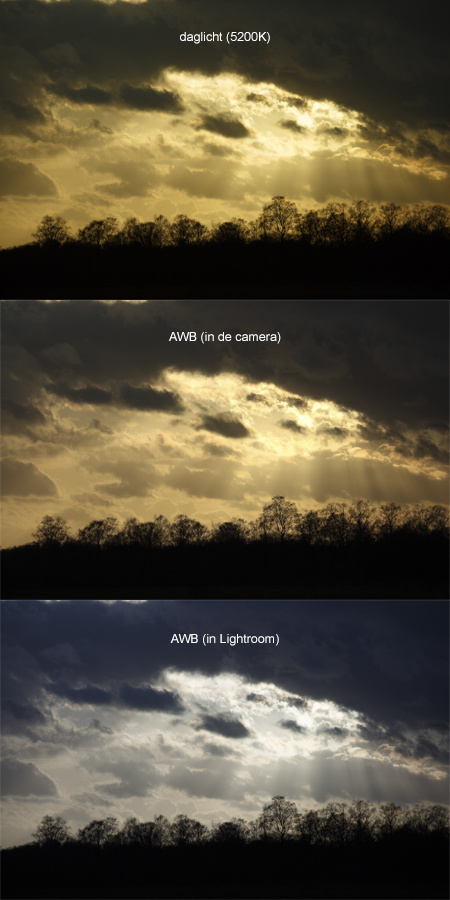
At first I thought auto white balance is the same, but as you can see, the auto white balance of the camera does a better job than the auto white balance in Lightroom. This is logical, I think. The camera was there at the spot, Lightroom just looks at the picture.
In the end it comes down to your own preferences. I guess there is no wrong or right. But you can benefit from having complete control on the color temperature of the image. What kind of white balance setting do you use? Do you choose your setting manually, or do you rely on the auto white balance? Please let me know in the comments below.
If you're passionate about taking your photography to the next level but aren't sure where to dive in, check out the Well-Rounded Photographer tutorial where you can learn eight different genres of photography in one place. If you purchase it now, or any of our other tutorials, you can save a 15% by using "ARTICLE" at checkout.
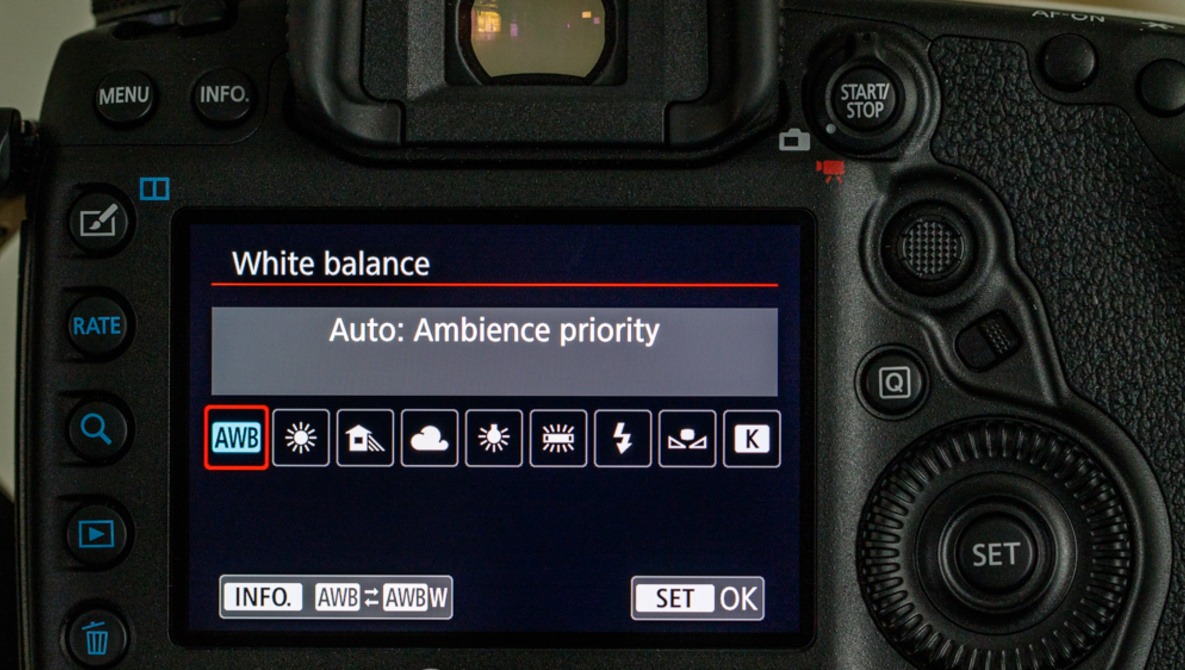






Great article!
Thanks, Nicholas :)
An interesting and sound reasoning. I my not entirely give up AWB, but after reading this article I am thinking about the idea to use fixed WB depending on circumstances.
Always worth a try. If it isn't your cup of tea, you can always go back to AWB
Your reasoning triggered the idea, and I made number of checks during last five days, taking lot of photos in both alternatives.
What I've found so far is a bit surprising. On my small DX Nikon, AWB often produces the truest possible colours compared to any fixed WB.
Yet it's worth trying alternatives in many different circumstances. I have to investigate much more...
Good article on white balance. I have recently started doing Astrophotography and there are many different options on what white balance to use in this type of photography. Would you like to share your thoughts on this topic.
Thank you,
Gerry D